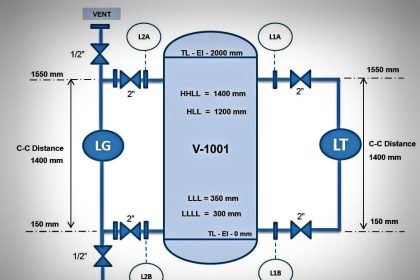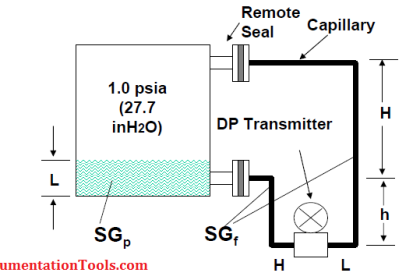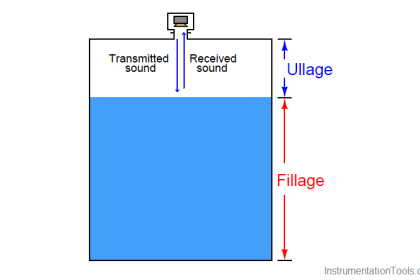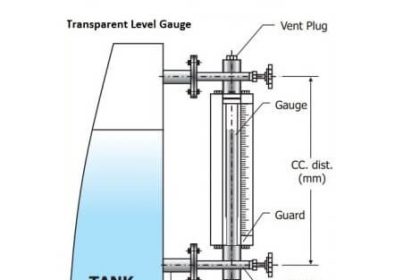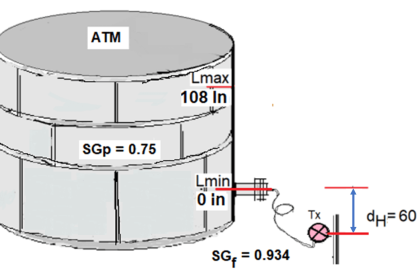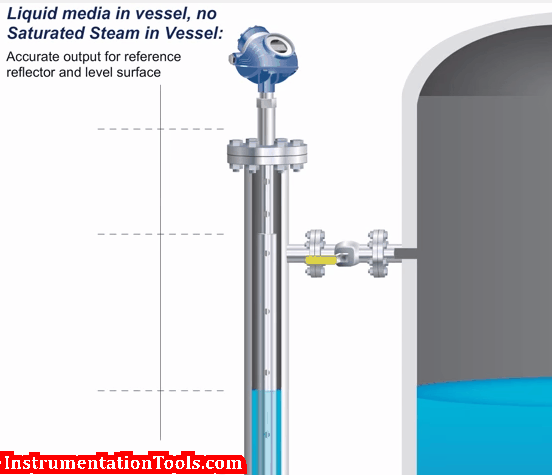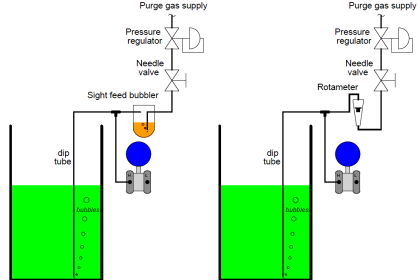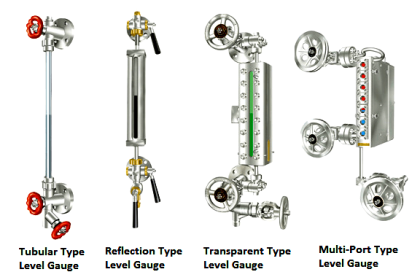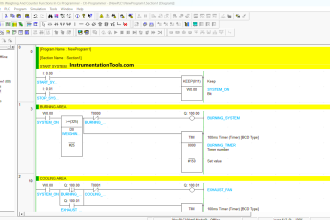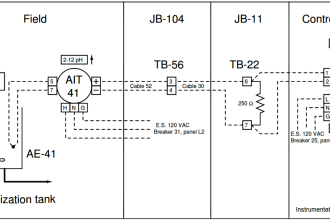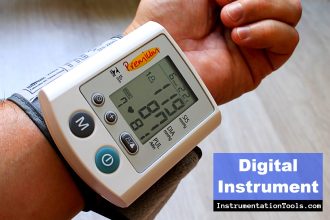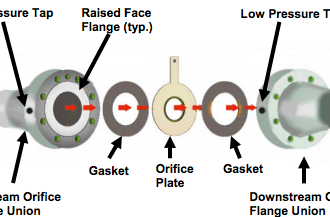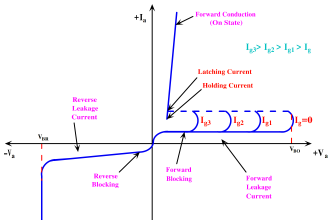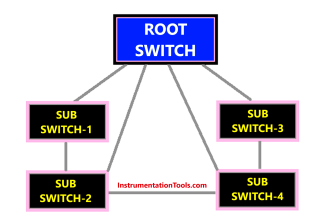In capacitive tank gauges, the principle of capacitor is used for level measurement.
A constant voltage is applied to a metallic probe within the tank. The corresponding current is then monitored. This current is proportional to the capacitance from the metallic probe to a second electrode. The second electrode is generally a wall of the tank.

Figure: A capacitor interpretation of the elements of a capacitive level measurement system
False high-level indications are a typical failure mode of this type of system. This kind of failure can be caused by one of the capacitive plates becoming coated with a material, such as the product being stored, to such an extent that the sensing element becomes connected to the ground.
Capacitive Tank Gauges
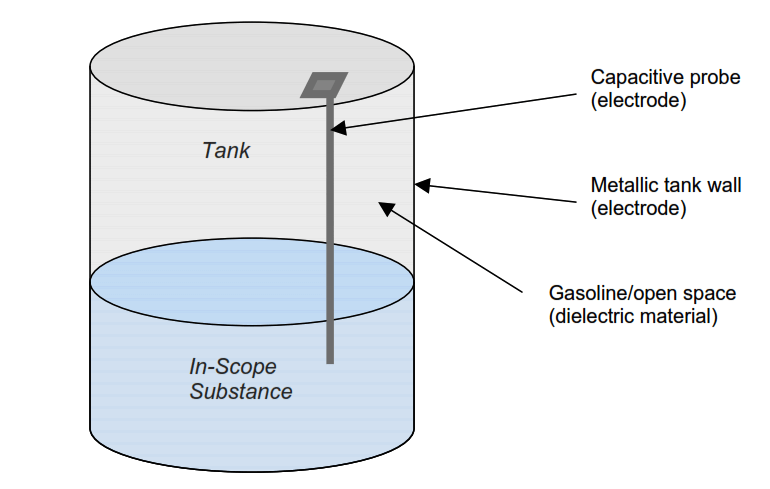
Figure: Simple diagram to demonstrate a capacitance-based level measurement system
Apart from the issue of plate coating, the capacitive level measurement system experiences very little operational degradation. This is because there are no moving parts.
Read Next:
- Capacitive Level Measurement
- Tank Level Detection Switches
- Capacitance Level Sensor
- Animation of Capacitance Sensors
- Calibration of Capacitance Level Sensor
